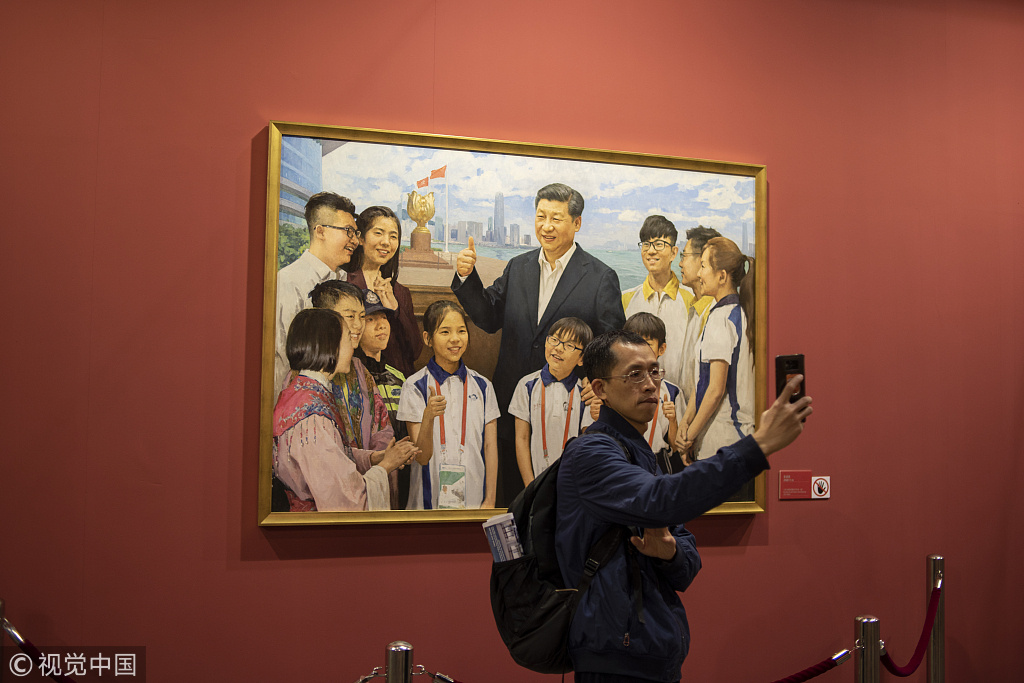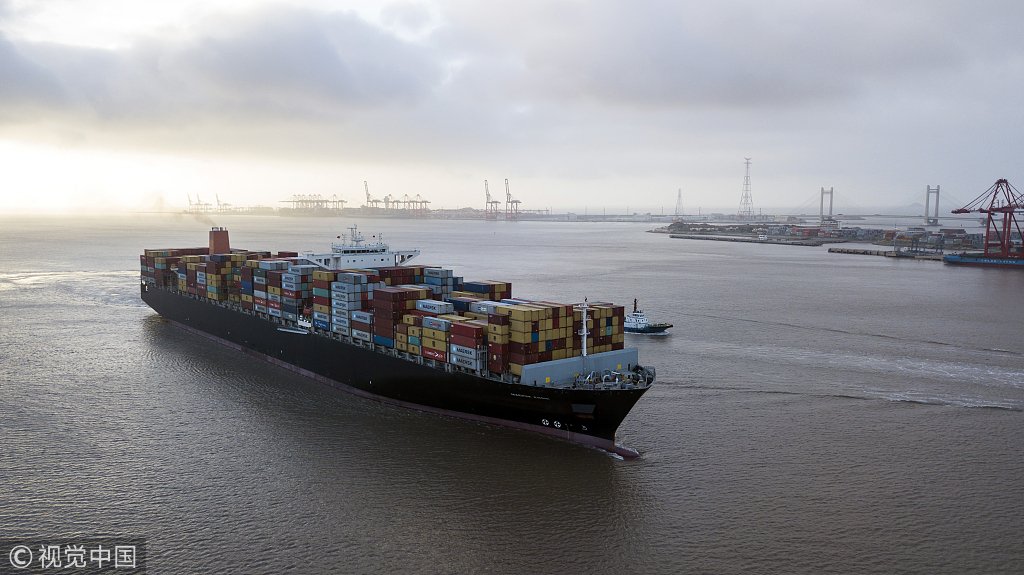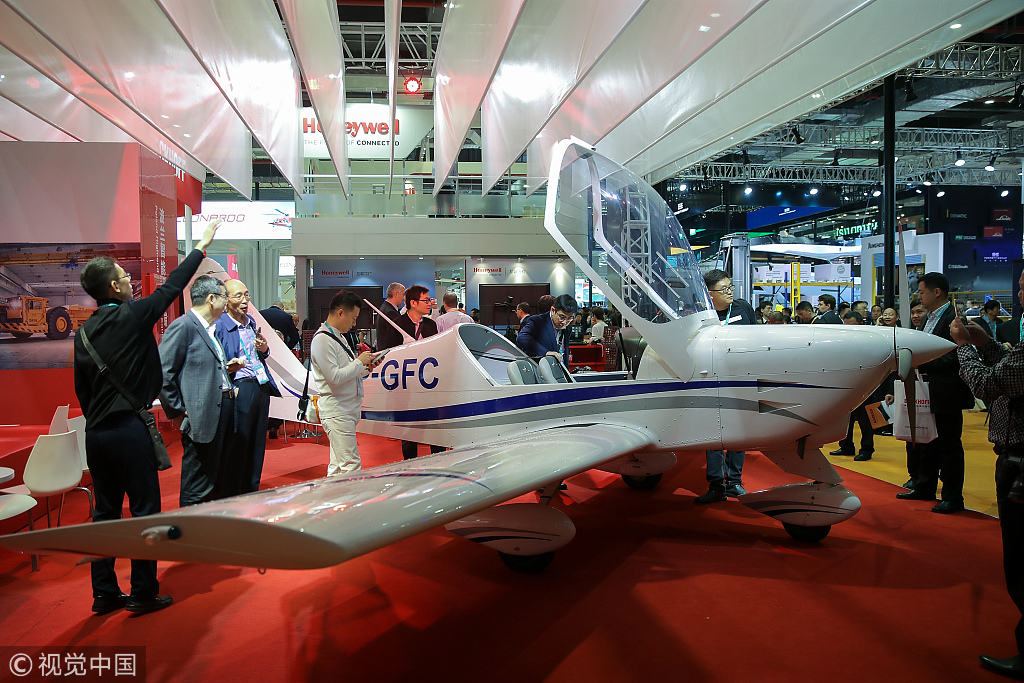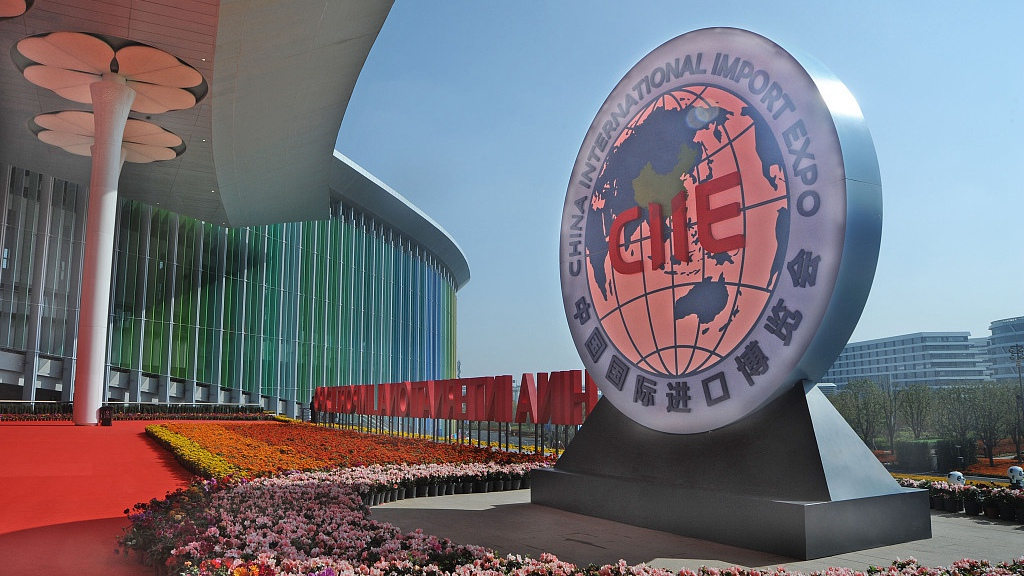Editor's note: Zhang Yi is a journalist from Guangming Daily. The following piece is an edited translation from Guangming Daily that first appeared on the newspaper's Chinese-language website on January 21. The article reflects the author's views and not necessarily those of CGTN.
What does opening-up mean?
For a cancer patient like Ms. Zhao, it means more affordable drugs thanks to the new zero-tariff policy for imported anti-cancer drugs: Her monthly spending on anti-cancer drugs has dropped from over 5,000 yuan (741 U.S. dollars) to 2,000 yuan (296 U.S. dollars).
For Mr. Li, an ordinary consumer, it means his dream of driving an electric car will become a reality: The construction of the Tesla Shanghai gigafactory started a few days ago. This is the first wholly foreign-owned project in China's new energy vehicle sector since the liberalization of the ratio of foreign shares, and the price of Tesla cars in China is expected to drop by more than 40 percent.
Looking back over Chinese history, reform and opening-up have always been a distinct theme. Each generation has its own historical mission, and each era has its own tasks and challenges to be addressed. China is ready to ride the tide of opening up in the new era for greater benefits, and to grow stronger by meeting competition and challenges in a more open world economy.
Opening-up promotes reform for high-quality development
In 2018, the total value of China's imports and exports hit an all-time high at 30.51 trillion yuan (4.52 trillion U.S. dollars), and its utilized foreign direct investment hit a record high at 885.61 billion yuan (131.32 billion U.S. dollars), reflecting a new level of opening-up of China in the new era.
China will make greater progress if it opens up further; otherwise, it will inevitably fall behind. China's economy has turned from high-speed growth to high-quality development, and it is now in a critical stage of industrial upgrading. In the past, it relied on quantity to win, but now it needs to upgrade its industry, switch tracks, and seek to renew itself through strengthened reform.

A man is seen taking a selfie with a painting of Chinese President Xi Jinping in the an art exhibition to mark the 40 years of reform and opening-up policy in Hong Kong, China, December 21, 2018. /VCG Photo
A man is seen taking a selfie with a painting of Chinese President Xi Jinping in the an art exhibition to mark the 40 years of reform and opening-up policy in Hong Kong, China, December 21, 2018. /VCG Photo
Opening up requires reform and in turn, promotes development. By opening its door wider and introducing more competition, the strong will get even stronger.
In the course of the past 40 years since the adoption of the reform and opening-up policy, the many Chinese miracles certify the success of the policy, inspiring its moving forward in opening up.
In the past 30 years, China's auto companies have set up joint ventures with foreign carmakers. China's auto industry has seized opportunities brought by the globalization of the world's auto industry, invited foreign companies to do business in China, and learned from their experience.
In the process of speeding up its opening up, China has grown into the most competitive and fully market-oriented automobile market in the world. China sells nearly 30 million cars every year, ranking first in the world for 10 years in a row.
Opening up to the outside world has become an irresistible trend in the world. Those who can provide better products and services for consumers will dominate the industry and market. At present, China's auto industry has gone beyond the initial stage where it needed protection, and has established a standardized operating mechanism and a mature product development process, and is gradually catching up with foreign auto companies in terms of traditional technology. China's auto industry is positioned to compete with their foreign counterparts and is leading global markets in new energy vehicles and “smart connected” and other new technologies.
Opening-up meets people's increasing needs for a better life
Beautifully packaged Russian confectionery, nice French wine, and Australian lobsters shipped across the ocean. The food and agricultural products area at the first China International Import Expo (CIIE) in 2018 became the most popular category that attracted the highest number of exhibitors, the highest number of countries of origin and, as a result, generated a significant turnover. Different agricultural civilizations meet here to share their joy of good harvest.

The Soro Enshi container ship, operated by A.P. Moller-Maersk A/S, sails from Yangshan Deep Water Port in Shanghai, east China, July 10, 2018. /VCG Photo
The Soro Enshi container ship, operated by A.P. Moller-Maersk A/S, sails from Yangshan Deep Water Port in Shanghai, east China, July 10, 2018. /VCG Photo
“We will host CIIE every year to further open up the Chinese market to the world.” The Chinese government has made a commitment to the world for further expanding its openness.
In 2018, the keyword of China's agricultural cooperation with foreign countries is “opening-up”, a right choice in line with the direction of China's agricultural development.
China is the world's largest importer of agricultural products, and the second largest agricultural trading country. The development of trade in agricultural products effectively alleviates the pressure on domestic agricultural resources and environment and ensures domestic supply and market stability.
In 2018, in order to make full use of both international and domestic resources, promote structural reform on the supply side of China's agricultural sector, and meet the increasing consumption demand of domestic consumers, China took steps to expand imports and encourage exports. China's total trade, exports and imports of agricultural products have all increased, which played an important role in guaranteeing domestic supply and maintaining market stability.
Opening-up enhances investment liberalization and facilitation
Since the 18th National Congress of the Communist Party of China, China has promoted a new round of high-level opening-up and introduced a series of major measures to utilize foreign investment, creating better conditions for the long-term development of foreign-funded enterprises.

People look at a Polish high-end intelligent aircraft during the CIIE at the National Exhibition and Convention Center in Shanghai, east China, November 6, 2018. /VCG Photo
People look at a Polish high-end intelligent aircraft during the CIIE at the National Exhibition and Convention Center in Shanghai, east China, November 6, 2018. /VCG Photo
In 1980, there were only three foreign-funded enterprises in the Chinese mainland, and by the end of 2017, the number of enterprises invested by foreign countries in Chinese mainland, Hong Kong and Macao SARs and Taiwan had grown to 50,000.
Foreign-funded enterprises bring not only capital but also advanced technology, international market opportunities, high-quality personnel and modern management experience, which have greatly helped China to become a major industrial manufacturing country.
Since the 18th Party Congress, China has adhered to openness, integration, mutual benefit and win-win cooperation, played an active role in building an open economic system at home and advocated the building of a community with a shared future for mankind. China is opening up even wider to the outside world.
Over the past 40 years of reform and opening-up, China has witnessed continuous breakthroughs in making innovations, improving quality and providing services.
In the past year, China introduced effective measures to reduce taxes and fees, improve the business environment at trading ports, and promote cross-border trade facilitation, sending a clear signal that foreign investors are welcome to enter the Chinese market.
In 2019, China will continue to promote all-round opening up, and accelerate the transition into rules-based and institutionalized opening-up. In the near future, China's foreign investment management model and opening-up level will be fully brought in line with those countries with a higher degree of openness in the world, and high-level investment liberalization and facilitation will be realized.
(If you want to contribute and have specific expertise, please contact us at opinions@cgtn.com)





